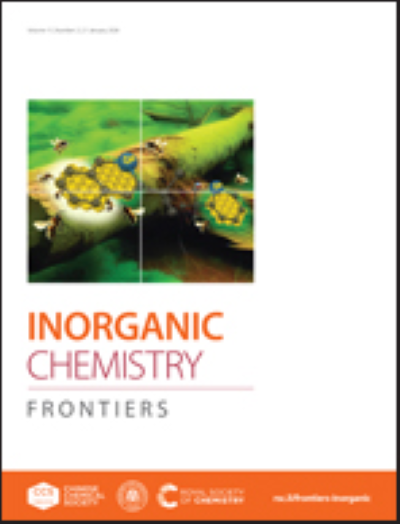Strategic design of vacancies and phase in flexible MoS2 for boosting triiodide reduction performance
IF 6.1
1区 化学
Q1 CHEMISTRY, INORGANIC & NUCLEAR
引用次数: 0
Abstract
Developing low-cost, efficient and flexible electrocatalysts is an important approach to promote the commercial development of dye-sensitized solar cells (DSSCs). Herein, we utilize a simple and mild H2O2 etching strategy to introduce Mo vacancies on the surface of MoS2 thin film and cause the crystal phase change from 2H to 1T. By systematically adjusting the etching time, temperature, and solution concentration, the optimal concentration of Mo vacancies was obtained. As a result, the optimized flexible CE (MoS2-60 s) exhibited the highest power conversion efficiency (4.45%), which was increased by 33.24% compared to the untreated MoS2 sample. Meanwhile, the PCE of MoS2-60 s CE under simulated indoor light irradiation (1000 lux) was 24.33%, demonstrating its advantages for indoor PV applications. The above data proved the effectiveness of the strategy about regulating vacancy and phase induced by etching, especially in indoor low light environment. Furthermore, the prepared flexible MoS2-60 s CE also possessed prominent electrochemical stability, bending durability and uniform electrocatalytic activity with the size of 4.5 × 5 cm. The significantly enhanced effect is mainly attributed to the synergistic effect of Mo vacancy and phase. Moreover, the transmittance of MoS2 CE after etching has been significantly improved, which has the potential for application in transparent DSSCs. In this article, the CE with high response in simulated indoor light, good stability, flexibility and transparency was prepared, which expanded the application scenario of DSSCs and promoted its commercial application.提高三碘化还原性能的柔性二硫化钼的空位和相位策略设计
开发低成本、高效、灵活的电催化剂是促进染料敏化太阳能电池(DSSCs)商业化发展的重要途径。本文采用一种简单温和的H2O2蚀刻策略,在MoS2薄膜表面引入Mo空位,使晶体从2H转变为1T。通过系统地调整蚀刻时间、温度和溶液浓度,获得了最佳的Mo空位浓度。结果表明,优化后的柔性CE (MoS2- 60s)具有最高的功率转换效率(4.45%),比未处理的MoS2样品提高了33.24%。同时,在室内模拟光照(1000 lux)下,MoS2-60 s CE的PCE为24.33%,显示出其在室内光伏应用中的优势。以上数据证明了蚀刻引起的空位和相位调节策略的有效性,特别是在室内低光环境下。此外,制备的柔性mos2 - 60s CE具有优异的电化学稳定性、弯曲耐久性和均匀的电催化活性,尺寸为4.5 × 5 cm。该效应的显著增强主要是由于Mo空位与相的协同作用。此外,蚀刻后MoS2 CE的透过率显著提高,具有应用于透明DSSCs的潜力。本文制备了对室内模拟光响应高、稳定性好、柔韧性好、透明度好的CE,拓展了DSSCs的应用场景,促进了其商业应用。
本文章由计算机程序翻译,如有差异,请以英文原文为准。
求助全文
约1分钟内获得全文
求助全文
来源期刊

Inorganic Chemistry Frontiers
CHEMISTRY, INORGANIC & NUCLEAR-
CiteScore
10.40
自引率
7.10%
发文量
587
审稿时长
1.2 months
期刊介绍:
The international, high quality journal for interdisciplinary research between inorganic chemistry and related subjects
 求助内容:
求助内容: 应助结果提醒方式:
应助结果提醒方式:


